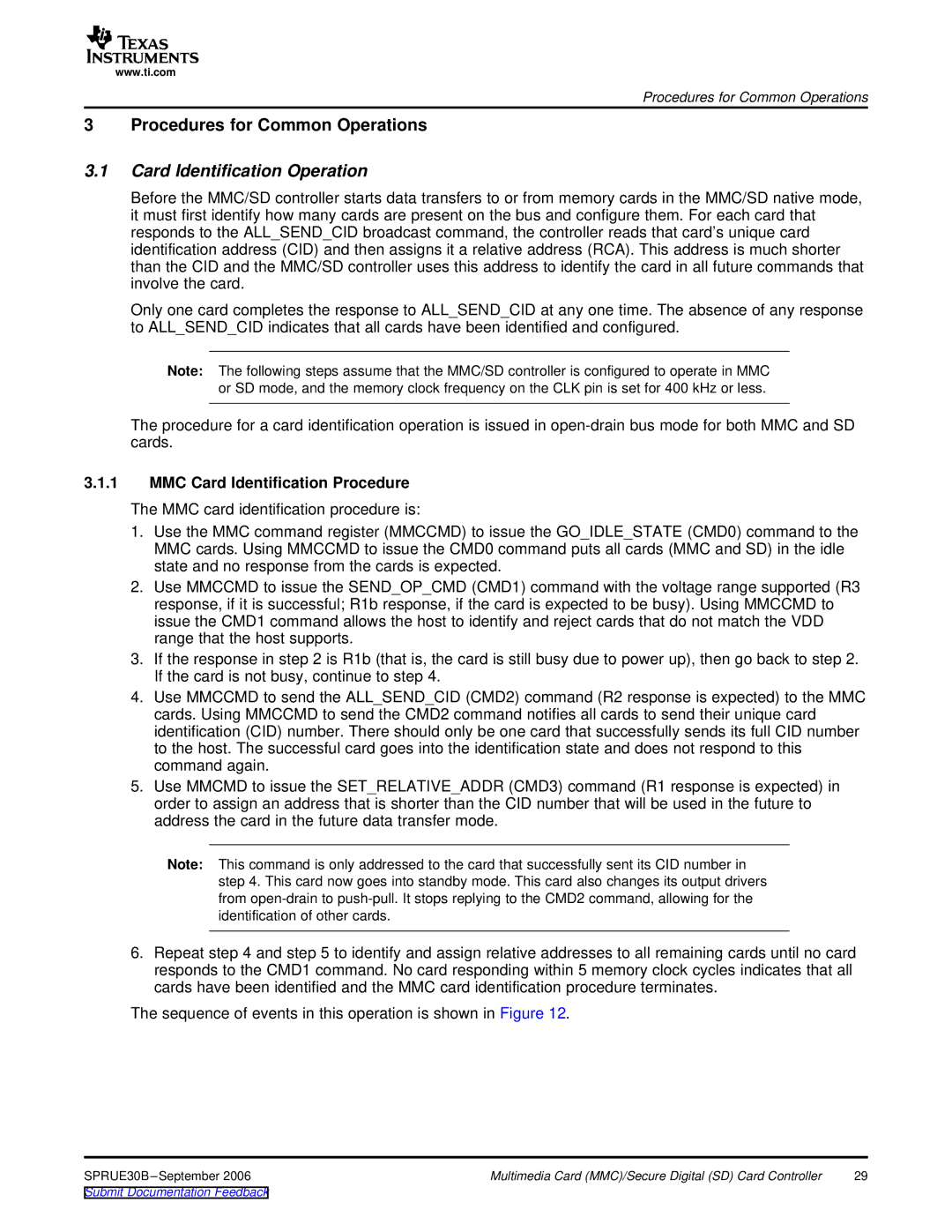
www.ti.com
Procedures for Common Operations
3 Procedures for Common Operations
3.1Card Identification Operation
Before the MMC/SD controller starts data transfers to or from memory cards in the MMC/SD native mode, it must first identify how many cards are present on the bus and configure them. For each card that responds to the ALL_SEND_CID broadcast command, the controller reads that card’s unique card identification address (CID) and then assigns it a relative address (RCA). This address is much shorter than the CID and the MMC/SD controller uses this address to identify the card in all future commands that involve the card.
Only one card completes the response to ALL_SEND_CID at any one time. The absence of any response to ALL_SEND_CID indicates that all cards have been identified and configured.
Note: The following steps assume that the MMC/SD controller is configured to operate in MMC or SD mode, and the memory clock frequency on the CLK pin is set for 400 kHz or less.
The procedure for a card identification operation is issued in
3.1.1MMC Card Identification Procedure
The MMC card identification procedure is:
1.Use the MMC command register (MMCCMD) to issue the GO_IDLE_STATE (CMD0) command to the MMC cards. Using MMCCMD to issue the CMD0 command puts all cards (MMC and SD) in the idle state and no response from the cards is expected.
2.Use MMCCMD to issue the SEND_OP_CMD (CMD1) command with the voltage range supported (R3 response, if it is successful; R1b response, if the card is expected to be busy). Using MMCCMD to issue the CMD1 command allows the host to identify and reject cards that do not match the VDD range that the host supports.
3.If the response in step 2 is R1b (that is, the card is still busy due to power up), then go back to step 2. If the card is not busy, continue to step 4.
4.Use MMCCMD to send the ALL_SEND_CID (CMD2) command (R2 response is expected) to the MMC cards. Using MMCCMD to send the CMD2 command notifies all cards to send their unique card identification (CID) number. There should only be one card that successfully sends its full CID number to the host. The successful card goes into the identification state and does not respond to this command again.
5.Use MMCMD to issue the SET_RELATIVE_ADDR (CMD3) command (R1 response is expected) in order to assign an address that is shorter than the CID number that will be used in the future to address the card in the future data transfer mode.
Note: This command is only addressed to the card that successfully sent its CID number in step 4. This card now goes into standby mode. This card also changes its output drivers from
6.Repeat step 4 and step 5 to identify and assign relative addresses to all remaining cards until no card responds to the CMD1 command. No card responding within 5 memory clock cycles indicates that all cards have been identified and the MMC card identification procedure terminates.
The sequence of events in this operation is shown in Figure 12.
SPRUE30B | Multimedia Card (MMC)/Secure Digital (SD) Card Controller | 29 |
